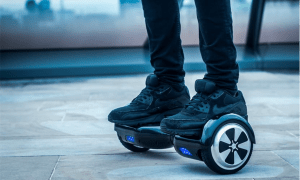Hoverboards have become a popular and exciting mode of personal transportation, offering a unique and thrilling riding experience. To ensure that your hoverboard continues to deliver optimal performance and longevity, it’s important to implement regular maintenance and care. Here are some essential tips and practices to help you maintain and prolong the lifespan of your hoverboard.
Regular Cleaning and Inspection
To keep your hoverboard in top condition, it’s crucial to perform regular cleaning and inspection routines.
- Cleaning the Body and Wheels: Use a soft cloth or sponge with mild soap and water to gently clean the hoverboard’s body and wheels. Avoid using excessive water to prevent damage to the electrical components.
- Inspecting for Damages and Loose Components: Regularly check for any signs of wear and tear, such as cracks, loose screws, or damaged cables. If you notice any issues, address them promptly to prevent further damage and ensure rider safety.
Battery Maintenance
Proper care of your hoverboard’s battery is essential for its longevity and optimal performance.
- Charging and Discharging Practices: Follow the manufacturer’s instructions for charging your hoverboard. Avoid overcharging or leaving it plugged in for extended periods. Similarly, don’t let the battery drain completely before recharging.
- Storing the Hoverboard with a Partially Charged Battery: If you plan to store your hoverboard for an extended period, keeping the battery partially charged, around 40-60% is recommended. This helps maintain its health and prevents excessive self-discharge.
- Avoiding Overcharging or Draining the Battery: Overcharging or fully draining the battery can lead to decreased battery life. Aim to keep your battery within the recommended charge range to optimize its lifespan.
Tire Care
Taking care of your hoverboard’s tires is crucial for a smooth and safe riding experience.
- Checking Tire Pressure: Regularly check the tire pressure and ensure it aligns with the manufacturer’s specifications. Proper tire pressure ensures better traction and performance.
- Replacing Worn-out Tires: If you notice significant wear or damage on your hoverboard’s tires, it’s advisable to replace them promptly. Worn-out tires can compromise stability and safety.
- Maintaining Proper Traction: Clean the tires regularly to remove any traction-related debris. Good traction ensures smoother rides and better control.
Protecting Against Environmental Factors
Shielding your hoverboard from harsh environmental elements helps maintain its longevity.
- Avoiding Water Exposure: Hoverboards are not designed for water resistance. Protect your hoverboard from wet surfaces, puddles, or heavy rain, as water damage can harm its electronic components.
- Shielding from Extreme Temperatures: Extreme temperatures, both hot and cold, can negatively impact your hoverboard’s battery life and overall performance. Store it in a cool, dry place and avoid exposure to direct sunlight or extreme cold.
- Protecting from Dust and Debris: When not in use, cover your hoverboard or store it in a protective bag to prevent dust, dirt, or debris from accumulating on the surface or getting into the internal components.
Calibrating the Hoverboard
Calibrating your hoverboard is crucial for maintaining proper balance, stability, and responsiveness.
- Ensuring Proper Balance and Alignment: Follow the manufacturer’s guidelines to calibrate your hoverboard for accurate balance and alignment. This ensures a smoother and more controlled riding experience.
- Following the Manufacturer’s Calibration Instructions: Each hoverboard model may have specific calibration procedures. Refer to the user manual or contact the manufacturer for precise instructions on calibrating your hoverboard.
Avoiding Excessive Weight and Overload
To protect your hoverboard’s components and ensure optimal performance, adhere to weight limits and avoid overloading.
- Understanding Weight Limits and Payload Capacities: Familiarize yourself with the recommended weight limits specified by the manufacturer. Exceeding the weight limit can strain the motor, battery, and other components.
- Preventing Overload to Avoid Strain on Components: Avoid carrying heavy backpacks or additional loads that exceed the recommended weight limit. Overloading can lead to premature wear and tear on the hoverboard’s components.
Conclusion
Proper maintenance and care are essential for prolonging the lifespan of your hoverboards. Regular cleaning and inspection, battery maintenance, tire care, protection against environmental factors, proper handling and storage, software updates, calibration, and weight management are all crucial aspects to consider. Remember, to ensure your self-balancing scooter lasts a long time, always buy one from a reliable company like Segbo so you know you invested in the right place.
Recommended Article: Hoverboards
